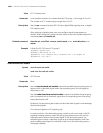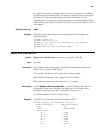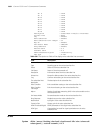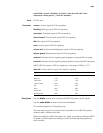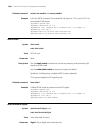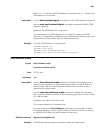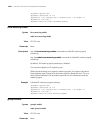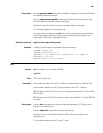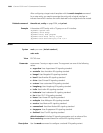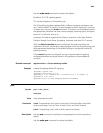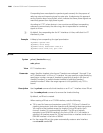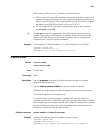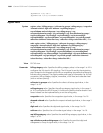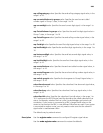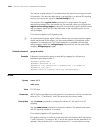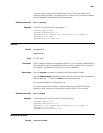
2658 CHAPTER 175: E1 AND T1 CONFIGURATION COMMANDS
After configuring a target match template with the match-template command
for a voice entity, you need to associate the entity with a logical interface to
indicate from which interface the traffic destined for the target should be routed.
Related command: timeslot-set, entity on page 2594, and pri-set.
Example # Associate a POTS entity with a TS group on an E1 interface.
<Sysname> system-view
[Sysname] voice-setup
[Sysname-voice] dial-program
[Sysname-voice-dial] entity 10 pots
[Sysname-voice-dial-entity10] line 1/0:1
mode
Syntax mode zone-name [ default-standard ]
undo mode
View R2 CAS view
Parameter zone-name: Country or region name. The argument can one of the following
values:
■ argentina: Uses Argentinean R2 signaling standard.
■ australia: Uses Australian R2 signaling standard.
■ bengal: Uses Bengalee R2 signaling standard.
■ brazil: Uses Brazilian R2 signaling standard.
■ china: Uses Chinese R2 signaling standard.
■ custom: Uses customized R2 signaling standard.
■ hongkong: Uses Hongkong R2 signaling standard.
■ india: Uses Indian R2 signaling standard.
■ indonesia: Uses Indonesian R2 signaling standard.
■ itu-t: Uses ITU-T R2 signaling standard.
■ korea: Uses Korean R2 signaling standard.
■ malaysia: Uses Malaysian R2 signaling standard.
■ mexico: Uses Mexican R2 signaling standard.
■ newzealand: Uses New Zealand R2 signaling standard.
■ singapore: Uses Singaporean R2 signaling standard.
■ thailand: Uses Thai R2 signaling standard.
default-standard: Initializes R2 signaling parameters such as values of the
force-metering command based on national R2 signaling variants.
Description Use the
mode command to configure a national R2 signaling variant.



